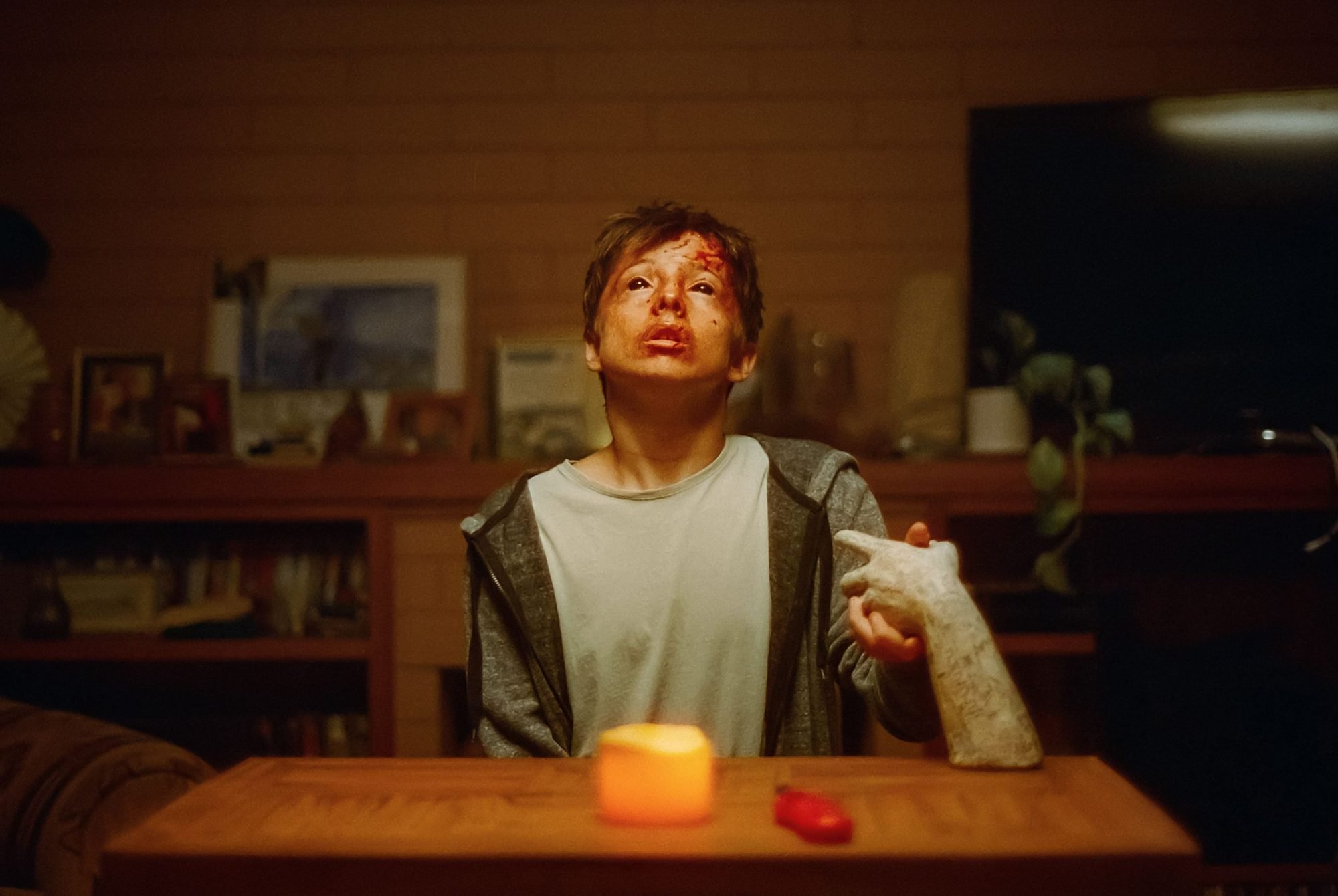I'm all in for horror movies. I highly appreciate the creativity and artistry that goes into crafting movies designed to elicit feelings of fear and suspense; horror is my thing.
My interest was piqued when I heard the positive buzz surrounding the new Australian horror film Talk to Me from the sibling directorial duo Danny and Michael Philippou, distributed by acclaimed Studio A24. With promising reviews out of its Sundance premiere mentioning how it brings something fresh to the increasingly formulaic possession subgenre, I decided to give it a shot.
I'm glad I did, as Talk to Me was one of the most unsettling and thought-provoking horror films I've seen in a long time. Right from the ominous opening sequence, it establishes an aura of creeping dread that lingers throughout its runtime.
Spoiler Alert
We're introduced to Mia, a teenager still grieving the suicide of her mother two years prior. She's withdrawn and emotionally fragile, struggling to process her loss. When she gets invited to a party by friends, the last thing I expected was for her to get caught up in contacting spirits through a mysterious embalmed hand.
But that's exactly what happens, as Mia and her friends decide to play around with the supposed psychic abilities of the hand found by hosts Hayley and Joss. In one of the early standout scenes, Mia lets a spirit possess her body after making contact.
What ensues is a masterclass in mounting unease as Mia's physicality and mannerisms subtly shift in unnerving ways. It's a testament to Sophie Wilde's nuanced central performance that sold me on Mia's distress in this vulnerable state. From there, the rules are explored - spirits can only inhabit a body for 90 seconds before causing harm. Naturally, some characters don't heed these warnings.
That's when Talk to Me evolves from an eerie paranormal tale into a harrowing examination of grief and mental health. Mia forms an unhealthy codependency on contacting her deceased mother, desperate for closure. But the spirits manipulating vulnerable hosts don't have good intentions.

One possession goes too far, resulting in a shocking moment of graphic violence I still shudder to recall. It's a testament to the filmmaking that one disturbing image in Talk to Me has stayed with me far more than countless jump scares in other horror films. The gruesome practical effects only enhanced the realism and fear.
After that turning point, Mia's descent into her psyche is a tragic film highlight. As she continues using the hand against all advice, it becomes unclear if the threats are supernatural or manifestations of her own troubled mind.
Wilde is extraordinary in conveying the nuanced emotional turmoil just below the surface. Even during some of the most harrowing sequences, I was impressed by how the filmmakers avoided falling into exploitation or glorifying mental illness, instead treating Mia's arc with compassion. The naturalistic locations and performances grounded the surreal occurrences in gritty psychological realism.
Talk to Me also works as a commentary on generational attitudes towards grieving and spirituality. While Mia longs for closure with her dead mother, her father, Max, represents moving on from tragedy healthily. And the hipster hosts see the Ouija board-esque hand more as a party trick than respecting spiritual forces. These dynamics added extra layers to the narrative and social relevance. The film struck a great balance of thoughtful subtext alongside its atmospheric scares.
Technically, Talk to Me is beautifully crafted from top to bottom. Cinematographer Aaron McLisky shot on lavish 35mm film, crafting moody wide shots and tight close-ups with equal mastery.
His camera lingers in unsettling ways during the most intense sequences. As practical makeup and prosthetic effects emphasize, horror is best experienced practically rather than relying on CGI.
Even during grisly moments, Talk to Me maintains a gritty realism. The original score by Cornel Wilczek also contributed heavily to suspense, knowing when to employ unnerving noises versus chilling silence.
While some critics complained that Talk to Me wasn't outright scary enough and certain plot points lacked thorough explanation, I think those perspectives miss the point. This paranormal horror film is more interested in messing with audiences' minds than jump scares.
Ambiguities are part of what made it so unsettling - I still find myself contemplating the enigmatic hand and spirits days later. The film resembles classic slow-burn chillers like Rosemary's Baby or The Shining that rely on suggestion over answers. And besides, after witnessing some of Talk to Me's most disturbing sequences, I don't think any explanations were needed for the terror to land.
In the end, Talk to Me sank its hooks into me as few horror films have. Its grounded yet surreal take on grief, possession, and Australian teen culture felt refreshingly unique within the genre. Even compared to acclaimed recent independent horrors like X, Men, or Bodies Bodies Bodies, Talk to Me felt more emotionally resonant in how it blends mental health themes into its scares.
It also is a breakthrough for its directing duo and star Sophie Wilde. I can't wait to see where their careers go from here. Talk to Me is highly recommended if you're looking for a horror film that will burrow under your skin through ambiguity and disturbing imagery rather than jump scares. It's the kind of modest-budget yet box-office hit that reminds me why I appreciate horror as an art form.
Movie Rating: 4.5/5
Note: 3 is the median. Anything above 3 is a recommended watch.